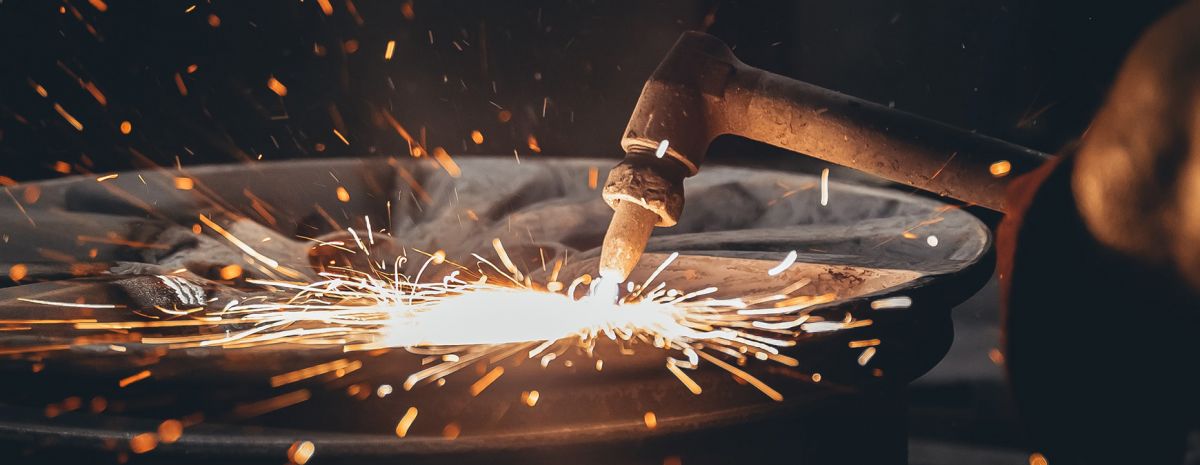RSI is a Great Training Option for Everyone
Learn more about how we can prepare you to advance your career.
Are you interested in learning how to cut metal materials? If so, you have options. You can choose between a plasma, track, waterjet, and laser cutter. To learn more about brazing, cutting, and soldiering, The Refrigeration School (RSI) offers a Welding Specialist program. This program can be completed in as little as seven months. Learn welding terminology and skills to secure an entry-level alloy, structural, or pipe welding role. With our smaller class sizes and hands-on training, you will be ready to start welding quickly. So, what are plasma and track cutters?
What is a Plasma Cutter?
Plasma is the fourth state of matter1. Matter changes from one state to another with heat. Like water, which can be liquid or gas, adding heat to the gases that make up steam can cause it to become ionized and electrically conductive, becoming plasma. A plasma cutter uses electrically conductive gas to transfer energy to conductive material, cutting it in the process. The plasma arc formation is made up of oxygen, nitrogen, argon, or shop air; using a plasma cutter torch, it is heated to temperatures above 20,000 degrees Celsius. It adds an electric arc to the high-pressure gas flow, quickly cutting the molten material. The elements of a plasma cutter include a power supply, arc starting console, and plasma torch.
What is a Track Cutter?
A track cutter makes long, straight cuts that may be too difficult to produce by hand. It also serves as a welding and automatic cutting machine. It creates an accurate and efficient cut..
What are the Other Ways to Cutting Metal Materials?
In addition to plasma cutters, there are waterjet and laser cutters2. Although more precise, they can be more expensive, include high operating costs and cut slower than a plasma cutter.
Waterjet Cutter
Get Started on the Path to a New Career
Fill out our form to learn how we can help you change your life.
A waterjet cutter pushes water and an abrasive at high pressure to cut sheets of almost any material. The pressure can reach over 50,000 PSI. The waterjet cutter uses an abrasive called garnet, which can be expensive and messy. However, a waterjet cutter can be the best solution if you want a quality and precise cut without using a welding tool.
Laser Cutter
While plasma cutters only use heated gas, a laser cutter adds focused beams of light to the heated gas to cut into materials. It uses compressed gas and electric current to create coherent light. The process melts and evaporates the metal as it cuts. The disadvantage of this cutting style is that it can create hazardous fumes, so ventilation is essential.
Want To Learn More?
The welding certification path starts with enrolling in RSI’s Welding Specialist program. This program combines hands-on training with classroom lectures to prepare you for entry-level structural, alloy, and pipeline welding job opportunities. To learn more, contact us.
- https://www.lincolnelectric.com/en/welding-and-cutting-resource-center/plasma-cutting-resource-center/process-and-theory/how-a-plasma-cutter-works
- https://tormach.com/articles/what-is-the-difference-between-plasma-cutting-waterjet-and-laser-cutting
Additional Sources




